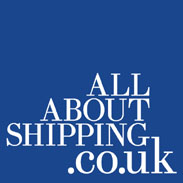
Mark Ford
High value subsea construction rope plays a crucial role in the subsea construction industry. A seminar being held by the International Marine Contractors Association in Amsterdam on Wednesday 29 October will enable attendees to fully understand, and become involved with the discussion on, what is what is required by the subsea construction industry.
This includes the approaches taken in fibre and hybrid rope system adoption into subsea hoisting, the readiness of such systems and clarification of any technical developments still required to close any gaps preventing adoption, awareness of existing systems, their performance and track record.
This free-to-attend workshop, one in a biannual series of events organised by IMCA’s Crane & Winch Workgroup, follows the successful workshop on Optimal System Design.
“Proposals for presentations covering Fibre and Hybrid Ropes for Subsea Construction – ‘Are we ready?’ are now being collated for the workshop, ” explains IMCA Technical Adviser, Mark Ford. “Topics that we are considering for discussion include:-
Fibre and coating selection and how this can affect performance
Rope design including splicing, repair, terminations, inspection and maintenance
Specialist jacketed and hybrid wire / fibre designs
Fibre rope hoisting winch design solutions and experience
Relevant codes and recommended practices
“The hot topics that we hope to include within sessions are:-
Acceptance requirements for fibre and hybrid ropes / gap analysis – what are the stumbling blocks?
Inspection, repair and maintenance – technology requirements
Discard criteria
System integration – guidelines and issue awareness
End user requirements and experience
“The previous workshop in the series attracted [roughly how many?] from across the rope production/users community; we look forward to a similar number attending in October.”
How to register
Pre-registration is essential, and those wishing to attend should email Parul Patel events@imca-int.com; tel: +44 (0)20 7824 5523; Fax:+44 (0)20 7824 5521.
Further information on IMCA and its work on behalf of its 970+ member companies in over 60 countries is available from www.imca-int.comand imca@imca-int.com. The association has LinkedIn and Facebook groups and its Twitter handle is @IMCAint
About IMCA
IMCA is an international association with some 970 members in over 60 countries representing offshore, marine and underwater engineering companies. IMCA has four technical divisions, covering marine/specialist vessel operations, offshore diving, hydrographic survey and remote systems and ROVs, plus geographic sections for the Asia-Pacific, Central & North America, Europe & Africa, Middle East & India and South America regions. As well as a core focus on safety, the environment, competence and training, IMCA seeks to promote its members’ common interests, to resolve industry-wide issues and to provide an authoritative voice for its members.
IMCA Vision & Strategy. As a result of work and collective input in 2013, IMCA has redefined its stated core purpose to be “Improving performance in the marine contracting industry”. To achieve this goal, IMCA’s Vision & Strategy has been devised with two elements in mind: Core activities and ways of working. Targets and objectives against which the association will measure progress in 2014 have been established. Note to Editors: We are more than happy to expand on this in tailor-made articles – just put us to the test, email judithpatten@jppr.uk.com or phone her on +44(0)20 8241 1912 to explain what you would like covered, length, and deadline.
IMCA publishes some 200 guidance notes and technical reports – many are available for free downloading by members and non-members alike. These have been developed over the years and are extensively distributed. They are a definition of what IMCA stands for, including widely recognised diving and ROV codes of practice, DP documentation, marine good practice guidance, the Common Marine Inspection Document (CMID) – now available electronically as eCMID, safety recommendations, outline training syllabi and the IMCA competence scheme guidance. In addition to the range of printed guidance documents, IMCA also produces safety promotional materials, circulates information notes and distributes safety flashes.





